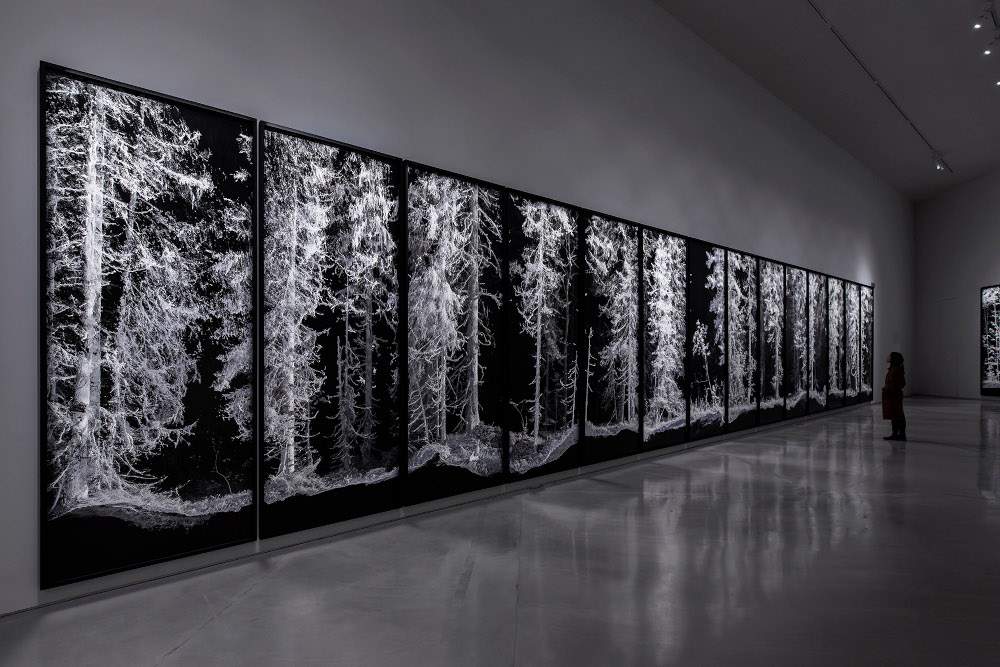Kicking off the first major solo exhibition in Rome by Quayola, renowned exponent of technological art
From September 29, 2021 to January 30, 2022, Palazzo Cipolla in Rome will host Quayola ’s first major Roman solo exhibition,Re-coding.
Among the most important international exponents of media-art, Quayola has created his own personal expressive code and a new artistic-communicative language. In the historic building of Palazzo Cipolla, the artist presents his first monographic exhibition in Rome: he will exhibit works for the occasion that will trace the complete panorama of his artistic creation, proposing a journey through the main themes of his computational art.
Made between 2007 and 2021, the works on display intend to provide the public with an overview of the artist’s creative process, time passages, anticipated futures and reconstructed pasts. The exhibition project is developed in three thematic areas: classical iconography, unfinished sculptures, and the tradition of landscape painting.
Using systems of robotics, Artificial Intelligence (AI) and generative software, Quayola transforms computational technology into a new palette: paintings from the Renaissance and Baroque periods are transformed into complex digital compositions through computational methods, and sculptures inspired by Michelangelo’s unfinished technique are sculpted through robotic means. This is followed by representations of nature, the product of generative art that highlights the fascinating similarity between the natural and digital worlds.
In front of video projections, sculptures and ultra-high-definition prints, visitors will have the opportunity to confront the artistic potential of these means of expression and acquire indispensable tools for reading contemporary society.
“Quayola uses the algorithms that regulate the digital world not only or not simply to create works of art,” said Emmanuele F. M. Emanuele, president of the Fondazione Terzo Pilastro - Internazionale, which is promoting the exhibition, “but rather to plumb, with the infinite opportunities that technology offers him, the research process that underlies the work of art itself, to explore the multitude of possibilities for the concretization of the creative idea. He breaks down and fragments, in order to reorganize and construct new aesthetic canons altogether. In this path so innovative and original, it is significant that for Quayola is fundamental the constant dialogue with the great masters of classical art, such as Raphael, Botticelli, Rubens, Bernini, whose sketches and preparatory drawings he prefers, because what is unfinished allows him - as he himself admits - to move away from the idea of representation to focus on the process. Quayola’s contemporary language thus gives rise to an exhibition that I hope will bring traditional purists closer to the new expressive codes derived from the most current technologies, which, far from being aseptic and ’dehumanized,’ put themselves at the service of the creative act in all its forms, offering the artist and his viewers new tools to explore the ineffable mystery of art making.”
Indeed, along the exhibition itinerary, the common character of Quayola’s artistic research emerges, namely the reinterpretation of the classic confronted with the great works of the masters reproduced on pedagogical signs.
An integral part of the exhibition is the presentation of his robotic sculptures: in this case, the dialogue with the great artists of the past and especially with Bernini is the basis for the development of a never-before-seen sculptural body made with the support of an AI robotic system.
The exhibition is promoted by the Fondazione Terzo Pilastro - Internazionale, chaired by Emmanuele F. M. Emanuele, is produced by Poema with the organizational support of Comediarting and Arthemisia, and is curated by Jérôme Neutres and Valentino Catricalà .
Image: Quayola, Remains: Vallée de Joux (2018; series of inkjet prints)
 |
| Kicking off the first major solo exhibition in Rome by Quayola, renowned exponent of technological art |
Warning: the translation into English of the original Italian article was created using automatic tools. We undertake to review all articles, but we do not guarantee the total absence of inaccuracies in the translation due to the program. You can find the original by clicking on the ITA button. If you find any mistake,please contact us.




























